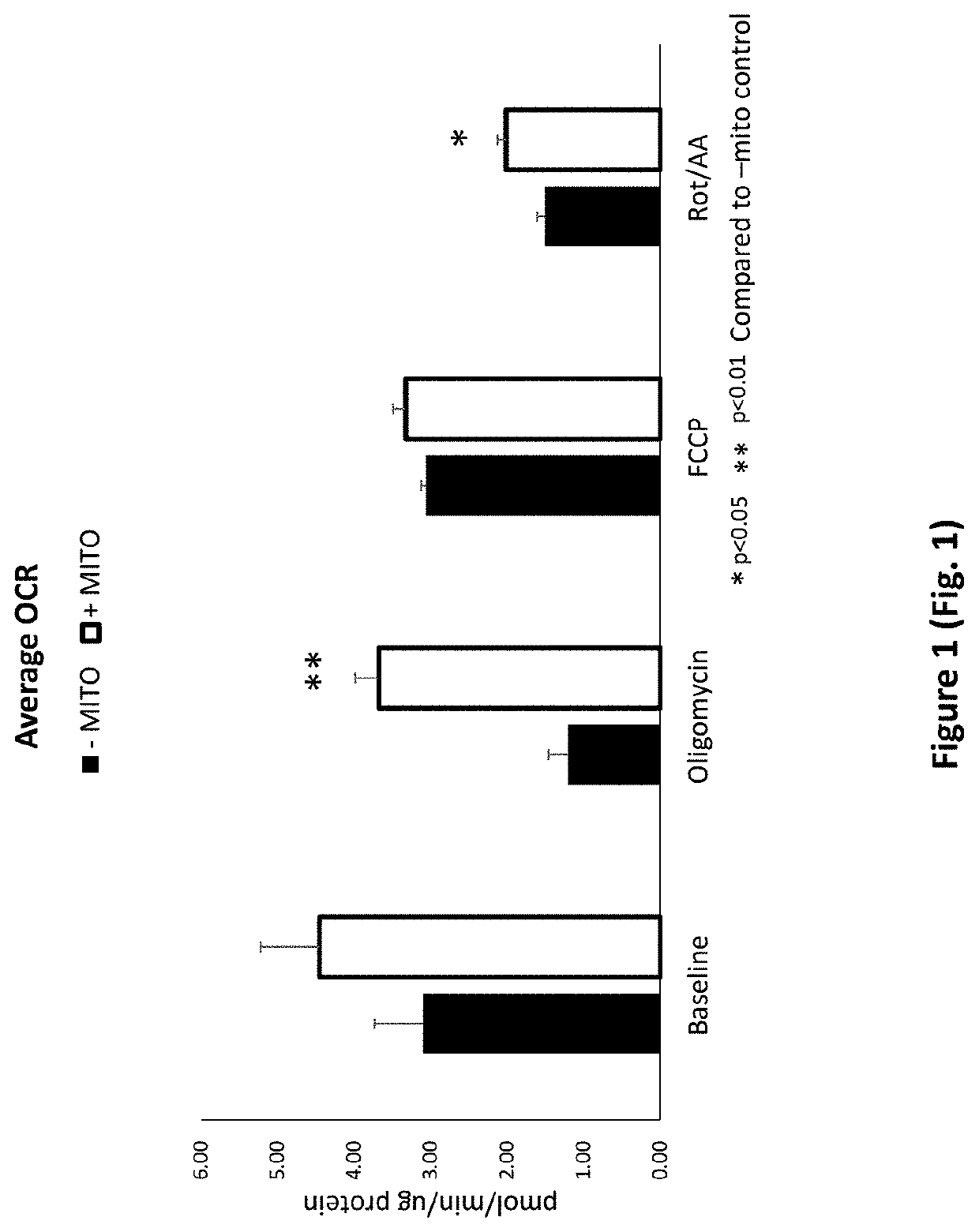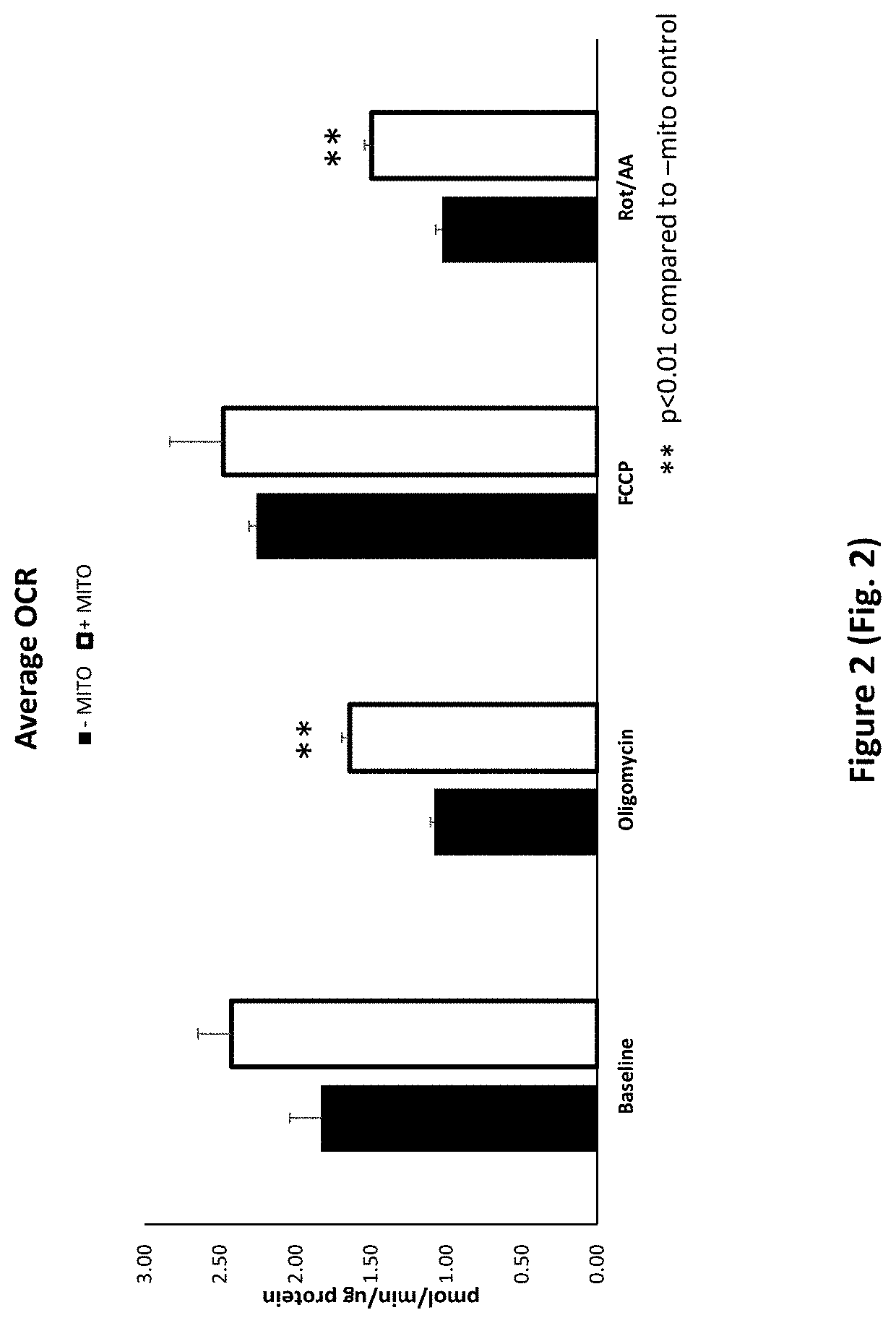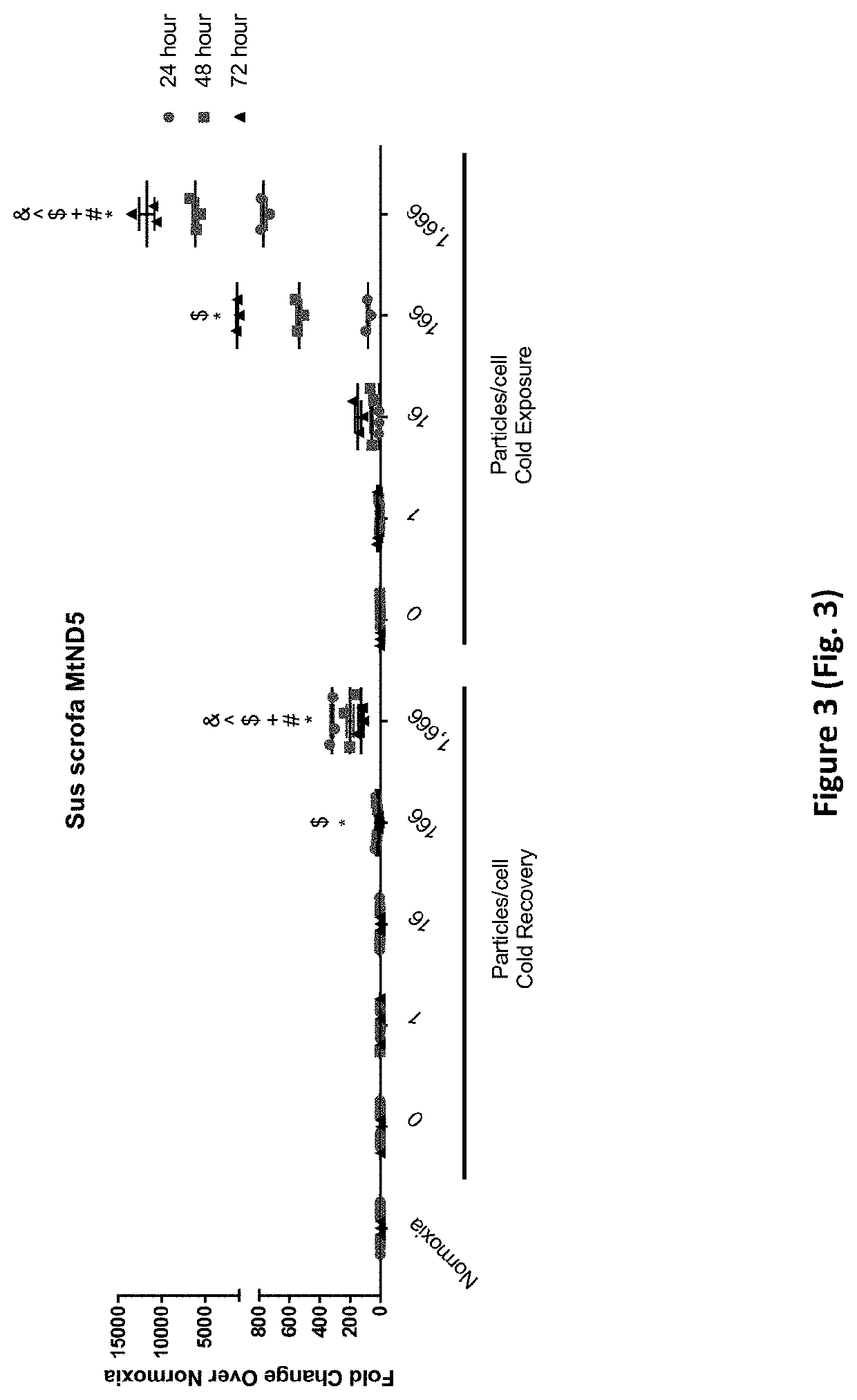Mitochondrial treatment of organs for transplantation
a technology of mitochondria and organs, applied in the field of mitochondria, can solve the problems of no known and approved treatments or therapies that involve the treatment of cells, tissues, organs with exogenous mitochondria, cell death by apoptosis, etc., and achieve the effects of improving the performance of implanted tissue, minimizing damage to an organ, and improving the function of a lung
- Summary
- Abstract
- Description
- Claims
- Application Information
AI Technical Summary
Benefits of technology
Problems solved by technology
Method used
Image
Examples
example 1
Treatment of Cells with Porcine Mitochondria Improves Oxygen Consumption Rate after Acute and Chronic Cold Exposure
[0296]To isolate porcine mitochondria, the entire left ventricle was removed from a freshly excised pig heart and placed in ice cold washing media (300 mM sucrose, 1 mM EGTA, 10 mM HEPES (pH 7.4)) for transport. A one inch square piece of tissue was cut from the left ventricle and transferred to a pre-chilled 50 ml conical tube containing 20 mL ice cold Trehalose buffer. The tissue sample was minced to obtain sample pieces of approximately 1-2 mm in size. The sample was enzymatically digested in a subtilisin A solution (5 mg / ml subtilisin A in 250 μl of Trehalose buffer) on ice for 10 minutes and homogenized using a Potter-Elvehjem pattern tissue homogenizer (3-7 passes). The sample was then passed through gauze into a 50 ml conical tube. The sample was centrifuged (10 minutes at 4° C. at 500 g) and the supernatant was decanted into a fresh 50 mL conical tube. The sampl...
example 2
Treatment of Cells with Porcine Mitochondria During Cold Recovery and Cold Exposure Alters the Expression of Genes Associated with Inflammation, the Innate Immune Response, and Cell Stress
[0303]NF-κB is a transcription factor known to upregulate pro-inflammatory gene expression. The effects of porcine mitochondria treatment on NF-κB gene expression in HPAEC under cold exposure and cold recovery conditions was evaluated by qRT-PCR. As shown in FIG. 5, porcine mitochondria treatment of HPAEC reduces NF-κB expression in cold recovery at 24 hours. HPAEC were treated, cultured under cold recovery or cold exposure conditions, and harvested at 24-hour, 48-hour, or 72-hour time points as described above for FIG. 3. In the cold recovery condition, untreated control HPAEC demonstrated an 83% increase in NF-κB expression at 24 hours compared to normothermia controls. Porcine mitochondria treatment trended to decrease the NF-κB expression compared to untreated cold-recovery control HPAEC, with ...
example 3
Treatment of Cells with Porcine Mitochondria Under Hypoxic Conditions Decreases Secretion of Pro-Inflammatory Gene Products
[0306]To evaluate the effects of porcine mitochondria treatment on human endothelial cells under hypoxic conditions, HPAEC were cultured at normoxia or hypoxia (1% O2) for 24 hours prior to porcine mitochondria treatment. After porcine mitochondria treatment, HPAEC were placed back in their respective conditions, normoxia or hypoxia. 300 μL cell culture media was then collected at 24 hours, 48 hours, or 72 hours and placed in a sterile 1.5 mL Eppendorf tube at the appropriate time point (24 hours, 48 hours, or 72 hours). The tubes were spun down for 10 minutes at 4° C. at 2,000 rpm. The supernatant (270 μL) was collected and placed in a fresh, sterile 1.5 mL Eppendorf tube. These samples were immediately stored at −80° C. until analysis by inflammatory cytokine array. Secreted pro-inflammatory gene products were measured in the cell culture media using an inflam...
PUM
| Property | Measurement | Unit |
|---|---|---|
| temperature | aaaaa | aaaaa |
| time | aaaaa | aaaaa |
| time | aaaaa | aaaaa |
Abstract
Description
Claims
Application Information
 Login to View More
Login to View More - R&D
- Intellectual Property
- Life Sciences
- Materials
- Tech Scout
- Unparalleled Data Quality
- Higher Quality Content
- 60% Fewer Hallucinations
Browse by: Latest US Patents, China's latest patents, Technical Efficacy Thesaurus, Application Domain, Technology Topic, Popular Technical Reports.
© 2025 PatSnap. All rights reserved.Legal|Privacy policy|Modern Slavery Act Transparency Statement|Sitemap|About US| Contact US: help@patsnap.com



